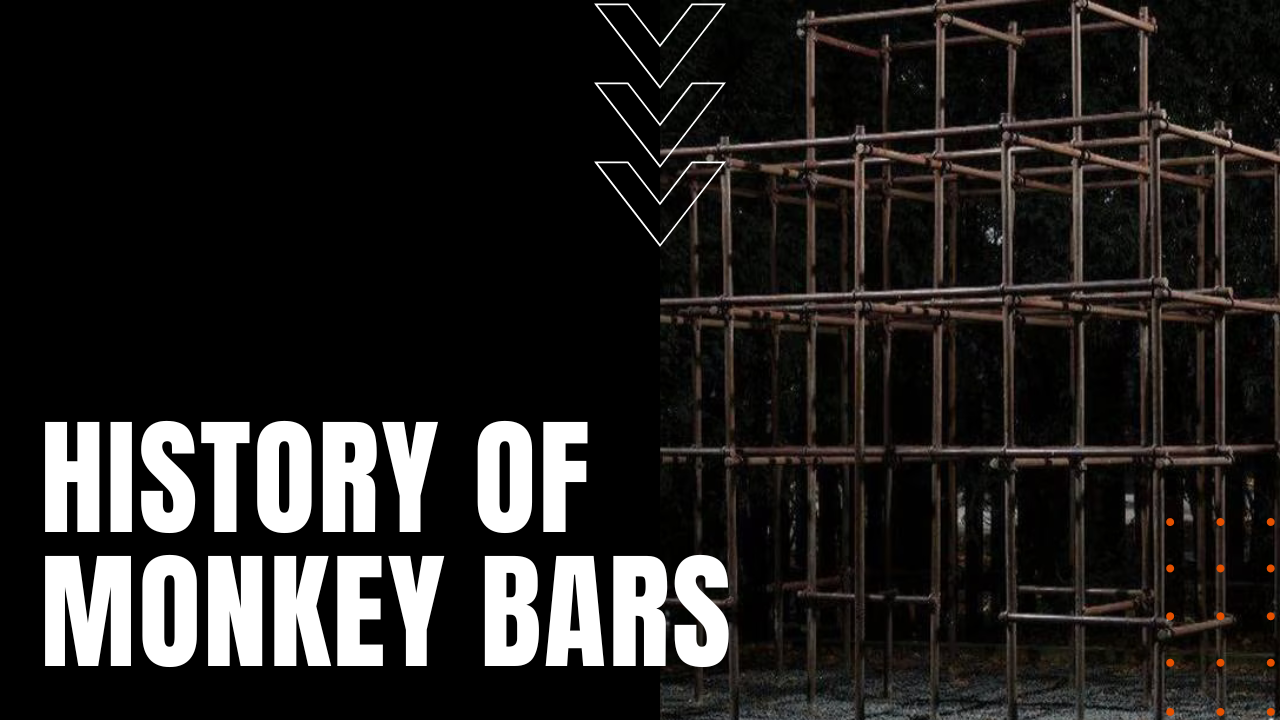History of Monkey Bars

Near the turn of the century, young Ted Hinton’s mathematician father, built a cubic bamboo grid in the backyard of the family’s Princeton New Jersey home, to teach Ted and his siblings spacial thinking as they climbed through the three dimensional maze. Reflecting on his childhood experience years later, Ted conceived of a metal variation of his father’s original design, fashioned like, as he wrote in his first patent application, “a kind of forest top through which a troop of children may play in a manner somewhat similar to that of a troop of monkeys.”
Award U.S. Patent
On October 23rd, 1923, Hinton was awarded the first of a series of patents for his “jungle gym,” marking the birth of a now childhood staple, the monkey bars. “Climbing is the natural method of locomotion,” Hinton wrote in his initial patent, “which the evolutionary predecessors of humans were designed to practice, and is therefore almost ideally suited for children.” In more recent times, research by anthropologists, primatologists and psychologists have borne out Hinton’s original precepts, revealing just how universally important play-climbing is to primate development, which has been further vetted by archaeologists in the fossilized bones of early man.
Even Primates Get Hurt
Veterinarians tending to primates in captivity further validate the importance of play-climbing and risk-taking amongst our human predecessors, since many X-rays of their patients reveal healed fractures caused by non-fatal falls. Since time immemorial, primates and humans have consistently invited serious injury through play-climbing, leading primatologists to view these behaviors as a critical means of fine-tuning fundamental motor skills and spacial thinking in young and old alike, yet since the birth of “ultra safe” playgrounds in the 1990s,
Substantial ER Visits
variations of monkey bars and climbing apparatus has sent some half a million children to U.S. emergency rooms over a five-year period, leading many developmental psychologists to contend that risky play is essential to the development and healthy growth of children, a necessary blueprint for the real-life dangers and risk assessments frequently required in adult living, making monkey bars, a vital stepping stone in early child development.
